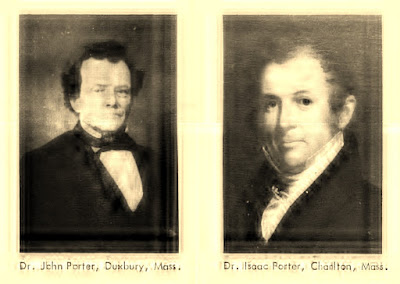The founding of the Village
of Cooksville 180 years ago, in 1842, began a special story of 19th,
20th and 21stcentury life in Wisconsin, a story that can
still be told today because the Village’s historic rural character is largely preserved.
The first settlers and eponymous founders, John and Daniel Cook, arrived in 1840 and platted their Village in1842. The Cook families, however, spent only about ten years in their Village, migrating further west to Iowa in about 1850. (The historic Cook House remains in the Village, as does an old metal cow-bell with the name “Cook” stamped on it.)
The story of the Village began, of course, before the Cooks arrived.
The land was the home of Native Americans, with names such as Yahara, Koshkonong, and Waucoma on area water features, as well as such names as Wiskonsan and the French version, Ouisconsin. After the French and English departed, the land and its wide prairies and oak savannas became part of the U.S. Northwest Territory in 1787, which in turn became a succession of named territories: Indiana, Illinois, Michigan and, finally, the Wisconsin Territory in 1836.
The Cooks’ story began a year later, in 1837, when the southern part of the Wisconsin Territory land was surveyed and put on sale to the public by the U.S. Government for $1.25 an acre. That’s when John and Daniel Cook of Ohio bought 40 acres of land south of the Bad Fish (or Waucoma) Creek, and, in 1840, the Cook families traveled by ox cart to their new Territorial property. Apparently, they first built a small log house and barn and constructed a saw-mill on the creek in order to build a proper house of sawn lumber in 1842. (The water-powered mill was used for many decades as a saw-mill and a grist-mill until it burned down in 1905.)
 |
| (Cook House, 1842) |
And in 1842, the Cooks officially platted their new little Village of Cooksville on the prairie next to the creek and soon sold Village lots to other settlers.
 |
| (Daniel Webster, 1834) |
In 1842, another step in the Village’s history took place: Senator Webster sold about 950 acres of his Wisconsin land bordering the Cooks’ new Village to Dr. John Porter, his friend and neighbor in Massachusetts.
 |
| (Dr. John Porter and his brother, Dr. Isaac Porter) |
Dr. Porter and his nephew,
Joseph K.P. Porter, traveled to Wisconsin via the Great Lakes in 1846 to
inspect his new land. There Dr, Porter, with the assistance of John Cook and a
local land-surveyor from the near-by stagecoach stop of Union, drew up the plat
for a new, large, 14-block Village adjoining Cooksville. Porter’s platted Village was more than four times as large as the Cooks’ Village. Porter named
his new Village “Waucoma,” a name meaning “Clear Water,” and recorded it on July
15, 1846.
 |
| (Map of Waucoma, 1846) |
“Waucoma” was the Indian name for the creek flowing along the northern edge of the Village and was suggested to Porter by Governor James Doty. Porter reserved the central block of his Village as a Public Square, a nod to the tradition in New England.
 |
| (The Cooksville Schoolhouse and Community Center, with a close-up of the Waucoma side of the Cooksville historical marker.) |
The Cooks and the Porters lived side-by-side in their Villages in the Town of Oak, soon re-named the Town of Porter in 1847. And both Villages still legally retain their names of Cooksville and Waucoma on the land records.
In a sense, historic Cooksville has had two official historic beginnings: one in 1842 by the Cooks and the other in 1846 by Porter with his adjacent Village of Waucoma. In 1917, the last officially appointed postmaster for the U.S. Post Office in the Villages apparently was the store-owner on the Cooksville side of Main Street, now Highway 138, and that’s probably why the Villages retained the name of “Cooksville” for the community.
 |
| (Map of Cooksville and Waucoma, 1891) |
Because Cooksville-Waucoma was by-passed by the new boom in railroads in the 1850s, the Village(s) soon became known as the “Town that Time Forgot.” The lack of a railroad, of course, ended the Villages’ growth and that's the reason much of its distinctive early mid-19th century pioneer architecture has survived, mostly unspoiled by “progress.” (In the 20th century the Village was once suggested as a perfect location for an outdoor museum of Wisconsin’s early historic architecture.)
 |
| (Isaac Gallup Porter, 1827-1899) |
Some of the earliest settlers’ families in addition to the Cooks and Porters included the Dow, Hoxie, Seaver, Fisher, Van Vleck, Newman and other families. Some descendents still live in the area.
Cooksville experienced another important new "beginning" in the 20th-century by being officially recognized by the National Register of Historic Places, the State Register and the local government for the community’s well-preserved and well-documented history and historic architecture.
Thanks to preservation efforts, Cooksville continues to tell the story of life in 19th century Wisconsin. And planning is underway to commemorate the 180th birthday of the historic Village of Cooksville.
 |
| ("Welcome to Historic Cooksville," from Joe, Mary and Larry) |
